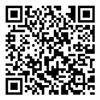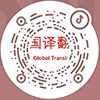Specific Solutions
Translating a Business Plan: More Than Just Words
Translating a business plan is not simply a matter of converting words from one language to another. It’s a strategic task that sits at the intersection of language, business thinking, and cultural nuance. Whether the document is intended for investors, international partners, or review committees, the translation needs to be accurate, persuasive, and culturally aligned.
Understanding the Logic Behind the Plan
At its core, a business plan is a persuasive document. It’s designed to demonstrate the viability, potential, and scalability of a business idea. Typical components include market analysis, product positioning, revenue models, team profiles, and financial forecasts.
This means a translator must go beyond literal comprehension and understand the structure and intent behind each section. The translation must preserve the original logic and flow while adapting the language to meet the expectations of a different audience—often with different assumptions about how business is communicated.
Terminology and Industry Language
A business plan is full of domain-specific terms—financial metrics, market terms, operational concepts—that require more than dictionary-level knowledge. A word-for-word translation can lead to awkward or even misleading results.
For example, the phrase “现金流为负” may literally translate to “negative cash flow,” but depending on context, it could be better rendered as “cash flow deficit,” “operating at a loss,” or even “burning cash.” Precision matters. The wrong choice can make a solid business case seem unclear or immature.
Each industry also comes with its own jargon and tone. A translator familiar with startup culture, for example, will know that “product iteration” and “technical barrier” are standard terms—not phrases to be rephrased or overexplained.
Tone, Style, and Persuasiveness
Unlike literary translation, a business plan requires clarity, focus, and a results-driven tone. Flowery language or overly long sentences may weaken the sense of credibility. The translator must find a balance between formality and conciseness, ensuring that the translation sounds confident, clear, and credible.
In some cases, grand or abstract expressions that work in Chinese may need to be toned down or reframed in English to meet international expectations. Quantifiable results, direct statements, and well-structured logic tend to carry more weight in English-language business writing.
The Translator as a Bridge, Not a Mirror
A good business plan translator is not just a linguistic mirror. They’re a logical and cultural bridge. Their role is to read deeply, translate accurately, and rewrite where necessary to preserve intention and impact.
A successful translation doesn’t just “make sense.” It works. It tells the same story with the same force—just in a different language.
And that, ultimately, is the goal: not just accuracy, but resonance.


















